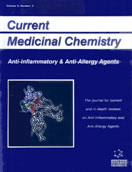Abstract
Ischemia and reperfusion (I / R) injury is a common inflammatory process in living conditions such as shock, organ transplantation and vascular operations in which arteries needed to be clamped. During the process of ischemia, there is cellular accumulation of xanthine oxidase and hypoxanthine because of the lack of oxygen. The more destructive effect of reperfusion is caused by the formation of highly destructive free radicals such as O2, OH and H202, which are produced in large quantities once the oxygen supply is resumed. The damage is magnified by neutrophil infiltration, cytokine activation, cellular apoptosis, and necrosis and microvascular destruction. The role of nitric oxide (NO) in the process of I / R has been controversial mainly because of the difficulty of measuring its concentration. NO is very reactive and has a very short half-life. Measurement of nitrite and nitrate has been used to measure NO concentration indirectly. Electron paramagnetic resonance method has proved to be more acc urate and specific for measuring NO. Peroxynitrite (ONOO-), formed as a result of NO reacting with free superoxide radicals in inflammatory bowel disease, has aroused concern about the damaging effect of NO. However, in I / R, NO has been shown to be beneficial because of its ability to protect microvasculature, prevent neutrophil infiltration, maintain vascular permeability and react with free radicals. It also has anti-microbial and anti-platelet-activating-factor properties. Agents that enhance NO formation, such as L-arginine and NO.NSAID, have great therapeutic potential to become effective anti-inflammatory drugs for the living conditions with I / R injury.
Keywords: Nitric Oxide, Ischemia, Reperfusion Injury, platelet-activating factor paf, adhesion molecules, pselectin, e-selectin, intercellular adhesion molecules icam, vascular cell adhesion molecules vcam, cytokines, nitric oxide no
 22
22

